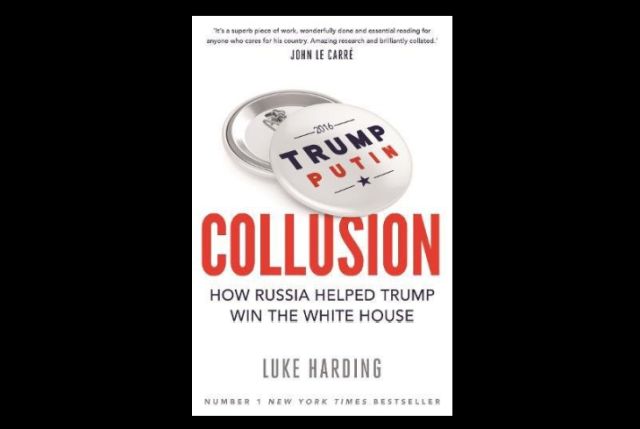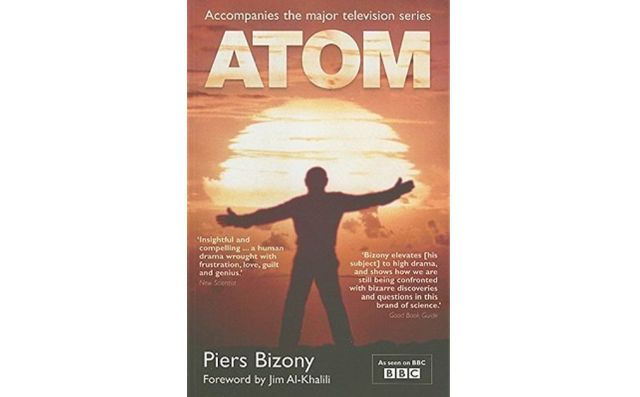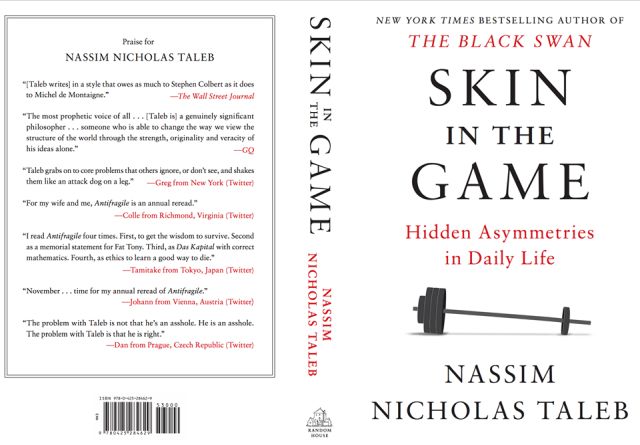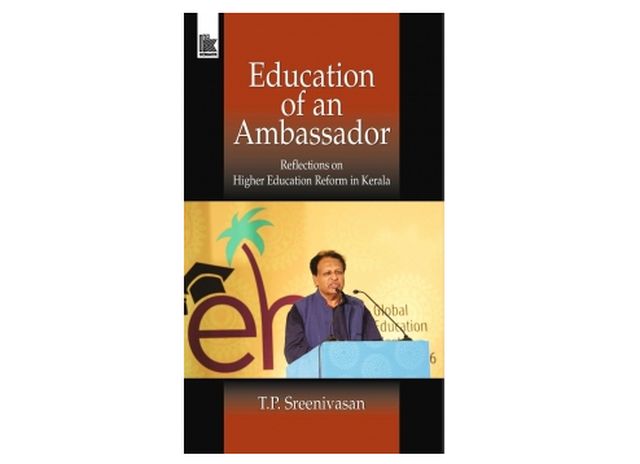
by admin | May 25, 2021 | Books
 By Vikas Datta,
By Vikas Datta,
Title: Collusion: How Russia Helped Trump Win the White House; Author: Luke Harding; Publisher: Guardian Books/Faber & Faber; Pages: 346; Price: Rs 599
Soon after being made Russian Prime Minister in 1999, Vladimir Putin reportedly told his former secret service colleagues that undercover spies, dispatched to infiltrate the US government, had “fulfilled their first objective”. Did he, in November 2016, make a similar quip about a pliable “agent” now heading an (increasingly) adversarial superpower?
He could well have, though the impact didn’t persist too long, as we learn here.
The issue of US President Donald Trump’s Russian connections and the role Russian interests purportedly played in his victory has been dogging him since that divisive election. While hacked Democratic Party’s emails hurt his rival Hillary Clinton — and raised suspicion why the Republicans’ emails, also hacked, weren’t released — his public appeal to “Russia” to keep on going seemed more than poll rhetoric.
The matter heated up with the turbulence in Trump’s White House, sacking of FBI chief James Comey, and Special Counsel Robert Mueller’s probe picking up pace.
But what are actually the allegations against Trump? What is the provenance of the dossier on his supposed Russian links that purportedly influenced the top election in the world’s most powerful democracy? And what did Russia hope to get out of it?
This is what award-winning journalist Luke Harding seeks to answer in this engrossing, eloquently-crafted expose, which seems more like a fantastic satire of the electoral process in the most powerful democracy, and would have been derided as a highly speculative and imaginative polemic if rendered as fiction.
And having more than a good idea of the reach, processes and capabilities of the Russian state and its agencies as Moscow bureau chief of the Guardian from 2007 till being deported in 2011, he is well suited to the task.
Harding, however, structures his account like a seasoned lawyer’s argument, setting the course with an evocative prologue, gives the story of the dossier with the dirt on Trump, explores various strands dealing with the principal protagonists, and goes into the telling backstory of Trump’s first contacts with the Soviets in the late 1980s when the Cold War was still on.
He then gives a fascinating overview of Soviet/Russian espionage methods, and finally delivers the activities of President Trump ripped from the headlines (the meeting with Putin at the G-20 meet in Hamburg) on which he rests his case.
Two more cases of evidence follow.
Beginning after Trump’s victory, when rumours that the Russians had helped and financed his campaign were engaging the attention of both American and British investigative journalists, we learn Harding’s paper also had two leads. In December 2016, he and a colleague met former British spy Jonathan Steele, who ran a “corporate intelligence agency”, or rather a non-state spy network, to discuss them.
They had no idea that the man they met was author of a rather damning dossier on Trump and his Russian links, commissioned by Republican rivals earlier that year. He also didn’t tell them whether they were on the right track, but suggested they follow two key trails — money and sex.
And soon the dossier would become public, adding to the troubles of Trump — and many around him: Short-lived foreign policy advisor Carter Page, campaign manager Paul Manafort, National Security Adviser Michael Flynn, son-in-law Jared Kushner and more.
Drawing on this dossier’s findings, supplemented by his own research and both British and Russian sources, including from the intelligence community, Harding spins the fantastic tale spanning “offshore money, sketchy real-estate deals, a Miss Universe Pageant, mobsters, money laundering, hacking and Kremlin espionage”.
It is also about greed, ambition, manipulation, long-term planning, subversion, subversion, sleaze and more.
Harding also enlivens his account with delightful descriptions — especially that of Russian Foreign Minister Sergei Lavrov; and humour — we learn that during the Trump’s visit to the violence-scarred Hamburg for G-20, there was one place he could have rowed over from his residence for a warm welcome: Opposite was the Russian consulate.
While the argument is cogent, convincing and verging on clinching, he also makes a good case that that it was only a tactical victory for the Russians.
What do we make of it? Simply put, there are too many connections for all to be coincidences. How will it play out? Only time can tell.
(Vikas Datta can be contacted at vikas.d@ians.in )
—IANS

by admin | May 25, 2021 | Books, Markets, Technology
 By Vikas Datta,
By Vikas Datta,
Title: Atom; Author: Piers Bizony; Publisher: Icon Science; Pages: 225; Price: Rs 499
In science, like life, the journey is as important as the destination. While this is true for every major scientific discovery that signals a paradigm shift in how we understand, interpret or modify ourselves or our world, it is most vital in the quest — still not completed — to plumb the very heart of matter.
And coming to know the structure of atom was not a mere scientific curiousity, but something that underpins the entire gamut of modern human civilisation. As we learn here, it can assist the remnants in case of any catastrophe that wipes out most of the population and information and knowledge accumulated over centuries.
Richard Feynman, among the greatest physicists of the 20th century (and cropping up regularly in this book), once contended that if in anticipation of such an eventuality, some toughened material had been prepared and kept safe to be discovered by survivors, humanity “could recover pretty much everything it needed to know about the material world” from a short sentence about the atom’s features and behaviour.
Why the atom is so important is what science journalist and space historian Piers Bizony tells us in this installment of the Icon Science series recounting the significance of key moment in science over the last few centuries.
And as he brings out, the focus on atoms, and its components and sub-components — which is still continuing — definitely qualifies.
“Our quest for the atom has been one of the greatest scientific adventures in history. Not the least of the problems is that the atom is a mind-numbingly small entity…” says Bizony.
But as we learn, the concept of atom — philosophically, not scientifically — was known from antiquity, especially among the ancient Greeks almost 25 centuries ago. But till a century or so ago, its structure, properties and applications were not known, or even deemed worth knowing.
Until the dawn of the Industrial Revolution, when the demand for new materials was high, and scientists scrambled to understand the properties and make-up of various materials. However, even for them, especially John Dalton in the late 18th/early 19th century, it was only a “spectacularly reliable chemical counting unit” and “a statistical way of looking at gas and steam pressures”.
All that, however, changed at the end of the 19th century, when scientists tried to understand radioactivity and understand what light’s nature was actually. And as this account shows, there was no looking back.
The account is not about the ground-breaking research of some of the greatest minds of science from the past two centuries — J.J. Thompson, Dmitri Mendelev, Max Planck, Marie Curie, Albert Einstein, Niels Bohr, Wolfang Pauli, Erwin Schrodinger, Lord Rutherford, Paul Dirac, Werner Heisenberg, Lisa Meitner, Enrico Fermi, Feynman himself and more — but also the leap of imagination and adoption of a new thinking that made it possible.
“Today, it is hard to imagine what little knowledge Marie and Pierre Curie started with when they embarked on their quest to explain radioactivity, or what a great leap of intuition Rutherford needed to figure out what the inside of an atom looks like,” says eminent physicist Jim Al-Khalili in the foreword.
And that is the whole crux of the issue — which goes beyond all the uses the properties and power of the atoms have been put most of the 20th century and beyond.
While Bizony does a great job in explaining the high-level science most lucidly and accessibly, and providing colourful pen-portraits of the scientists, who included rakes, introverts, philanderers, practical jokers and philosophers, his most significant contribution is chronicling the mindsets that made possible unveiling the atom’s secrets.
Letting imagination soar outside bounds, changing views and presumptions given theoretical dead-ends or contradictory experimental results, accepting opposite views — grudgingly or gracefully — when they are proven and, above all, the benefits of holding open minds and the habit of verifying all claims didn’t only help in this endeavour but are equally important outside science too.
And above all, the search for the atom’s structure not also showed the fundamental interconnectedness of matter but also how the actions of atom’s components — which have implications across greater scales — are not predetermined, and thus cause a relook at the very nature of causation and reality.
(Vikas Datta can be contacted at vikas.d@ians.in )
—IANS

by admin | May 25, 2021 | Books
 By Himani Kothari,
By Himani Kothari,
Title: Heather, The Totality; Author: Matthew Weiner; Publisher: Canongate Books; Pages: 138 ; Price: Rs 890
Matthew Weiner, the man who gave us the cult TV hit “Mad Men”, is back. Only this time, he has come out of his comfort zone and written a novel.
Weiner’s debut novel “Heather, The Totality” is everything “Mad Men” was not, and not in a good way. It’s so sloppy it’s hard to imagine this comes from the genius who created Don Draper, and, more importantly, strong female characters like Joan and Peggy who stood out in the chauvinistic world of “Mad Men”.
The theme of the aptly-titled novella is obsession and at the centre of it is Heather — a beautiful girl with messiah-like traits who does “bad” things like smoke, fold her skirt or wear make-up only because she doesn’t want “purity” added to her list of perfections.
Before Heather comes along, we are told the story of her parents — Mark and Karen Breakstone. Mark is a plain-looking middle-aged man, whose job is never actually revealed, but he earns well. That is what attracts Karen — an attractive woman, and because Weiner still believes in rating women, who is definitely a 10 — towards him.
Since their lives lack passion and they’ve reached a certain age, they do what anyone else does — get married, make a baby and obsess over it.
Running parallel to the story of the Breakstones is the story of Bobby — a good looking and intelligent boy born to a heroin-addict mother in New Jersey.
While Heather was being pampered by her parents, Bobby was eating cigarette butts, drinking beer and helping his mother and her friends shoot up even before he was 10.
You know the lives of Heather and Bobby are going to meet at some point but you don’t know how. And this excitement over whether it will be a love story with a happily-ever-after or end up as a story about hate and rage is what keeps you going in this otherwise dull book. And the climax is not half bad.
There are also hints of Carl Jung’s the Electra Complex, its parental reverse the Griselda Complex, and Freudian mother-daughter envy with sentences like — “At 55 years old, Mark’s maximum disinterest in his wife coincided with his daughter entering puberty.” Or with Heather getting closer to her father as she grows up and detesting her mother. But Weiner keeps them at the surface level and doesn’t dive deep into them.
And because the book is just 134 pages, the characters are not well carved-out and it’s hard to feel any empathy for them. Also, the complete lack of dialogue is unusual for the maker of cult TV shows. On the other hand, the capitalisation of some nouns — like Mother, Father, Worker — is strange and seems more suited to a screenplay than a novel.
Weiner was brave to choose the less popular route (authors generally write a novel which is then turned into a film or a show — something to do with the reading culture dying). And that’s why there were high hopes from him. But the book left me left wanting more. I wish he sticks to TV.
(Himani Kothari can be reached at himani.k@ians.in)
—IANS

by admin | May 25, 2021 | Books
 By Vikas Datta,
By Vikas Datta,
Title: Skin in the Game; Author: Nassim Nicholas Taleb; Publisher: Allen Lane/Penguin Random House UK; Pages: 272; Price: Rs 699
Things which should seem obvious are often not so in this complex world of ours — where randomness, probability and uncertainty play more of a role that we can conceive. Another key factor is of the unequal risk, or rather consequences — good or bad — as far as advice, decisions or policies are concerned.
It is in this that we see a curious asymmetry. Experts, or others in position of authority, who make the rules which impact thousands of people, may themselves be exempt from the consequences or remain otherwise unaffected — be it business, religion, foreign policy and so on.
This, as Lebanese-American essayist, scholar, statistician, former trader, and risk analyst Nassim Nicholas Taleb brings out in this book, is what can be called “skin in the game” — or its lack thereof. The phrase, coined probably by legendary American investor Warren Buffett, connotes an actor’s (not the screen sort) direct stake in the outcome of a decision they have taken or influenced.
It scarcely seems a desirable state of affairs, but as we learn here, it can explain why companies go out of business, or national economies go belly-up, why some minorities with marked intolerant traits end up with disproportionately large influence, or “exporting” democracy to other countries never works.
It may show why politicians with obvious character flaws seem more real than bureaucrats with impeccable credentials.
Skin in the Game, argues Taleb, is not only necessary for fairness, commercial efficiency and risk management, but also to explain a lot of the world’s other mysterious matters
In the fifth and latest in his “Incerto” series which seeks to investigate the “opacity, luck, uncertainty, probability, human error, risk, and decision-making when we don’t understand the world”, he tries to deal with the phenomenon. This is needed, he says, for “bull***t identification and filtering, or the difference between theory and practice, cosmetic and true expertise…”, and to identify “the distortions of symmetry and reciprocity in life: If you have the rewards, you must also get some of the risks, not let others pay the price for your mistakes”. Then there is information-sharing, and finally “rationality and the test of time”.
Taleb goes on, in his characteristic conversational style, to explain the significance of his concept, and its implications, especially those not immediately obvious or rather less obvious — including why surgeons look like surgeons, why do genes and languages spread differently, or how the scale of communities matters, and so on.
But while his thesis that the level of someone’s stakes in particular outcome is a vital, thought-provoking yet underrated determinant of events is significant with several implications, well explored throughout the book, there are several shortcomings too — both on content and proceedure.
Sometimes, his overall philosophy appears to be contradictory. He never misses any opportunity to rail against intellectuals (termed “Intellectual Yet Idiots”), academicians (especially economists and behavioural psychologists), thinkers — and even book reviewers, for some strange reason — while praising “doers” and men of practice. As he says: “Avoid taking advice from someone who gives advice for a living, unless there is a penalty for their advice.”
So what about his advice — for he doesn’t offer to hold him liable for what he professes, and thus the logical basis is faulty.
And then Taleb constantly pitches practice over theory — which is open to question. How can his intellectual exercise convince us to forgo the benefits (there are a few) of intellectual advice.
He does identify a problem but doesn’t provide proper solutions or deal with issues like conflict of interest, except dismissing them summarily.
And why does he have to be condescending and offensive? He uses profanity, though camouflaged (he takes pride in telling us how in response to an appeal from someone seeking he be more polite, he responded with full invective), and there are the ad hominem attacks on everyone from Steven Pinker to Thomas Piketty — also Spanish grammar experts. They crop up so much and so irrelevantly that its not even a running gag.
So read this as a good — though much disjointed — exploration of a key phenomenon but don’t expect it to show the way out.
(Vikas Datta can be contacted at vikas.d@ians.in )
—IANS

by admin | May 25, 2021 | Books
 By Mohammed Shafeeq,
By Mohammed Shafeeq,
Title: Education of an Ambassador: Reflections on Higher Education Reform in Kerala; Author: T.P. Sreenivasan; Publisher: Konark Publishers Pvt Ltd; Pages; 248; Price: Rs 800
Reforms anywhere face resistance. This will be severe in a system where there are multiple forces opposing any change to the status quo and there are ideological conflicts.
This book captures the saga of resistance diplomat-turned-educator T.P. Sreenivasan had to face in his attempts to introduce reforms in the higher education space in Kerala, the state with 100 per cent literacy.
The retired Indian Foreign Service (IFS) officer has penned his experiences as the Vice Chairman of the Kerala State Higher Education Council (KSHEC) during 2011-16. Two years after laying down office, he has given a detailed account of the reforms initiated by the council under his leadership and the opposition they had to face from a wide variety of players, ranging from lethargic and egoist bureaucrats to forces playing petty politics.
N.R. Madhava Menon, Chancellor, National University of Educational Planning and Administration, in his foreword, has described the book as a revealing document on what keeps higher education in Kerala regressive while talented youth migrate in large numbers to institutions outside the state for higher studies.
He notes that there is not only opposition to reforms on ideological grounds but teachers, students and even the ministerial staff of colleges and universities are unionised on the basis of their political affiliations.
“My experience was an eye-opener to the higher education system in Kerala, the bureaucracy at different levels and the strengths and weaknesses of the state. It convinced me that Kerala can realise its full potential only if fundamental changes are made in the mindset, outlook, work culture and ethics of its people,” Sreenivasan writes while summing up his experiences.
The council, under his leadership, submitted as many as 16 reports to the government, laying out a roadmap for reform, touching upon the most crucial areas such as infrastructure, teachers’ training, technology-based education, autonomy, research and internationalisation.
“It is unfortunate that most of our recommendations have remained unimplemented. Proposals like allowing the operation of private universities in Kerala and cooperation with foreign universities were countered on ideological grounds. The reports were not studied or processed for decisions by the government on account of general lethargy and turf battles.”
Sreenivasan believes that higher education has changed globally in the last 10 years rather than in the previous 100 years. “Unless we catch up with these changes and reform the way we teach and learn, we will be unable to make use of the opportunities and meet the challenges of the 21st century,” writes the former diplomat, who had set the goal of ‘Higher Education 2.0’ for the state.
He considers creating of awareness of the need to bring about major changes in education was the most significant achievement of the council during his tenure.
While explaining the logic of the measures recommended by the council and the benefits that are likely to accrue if they are implemented, he highlights the unfinished business of reform and stresses the need for recommendations to be examined by the government.
“Kerala seems to lack the mindset to change and the money to invest in education. Some champions of change in all areas oppose change in education. Absence of a prosperous private sector is also a handicap,” he writes.
He notes that as an advisory body, KSHEC was at the mercy of the Department of Higher Education, which has its own priorities.
“The very authorities who entrusted me with the responsibility of running the system lacked energy and enthusiasm and were concerned only about protecting their own interests. They had no hesitation in countering new ideas, delaying action and conspiring against change,” is how the reformer expresses his frustration.
The author notes that the proposal for permitting private universities got highly politicised even when a committee set up by the council was studying the issue. He recalls that then Education Minister P.K. Abdu Rabb opposed the private universities even as then Chief Minister Oommen Chandy suggested that the committee’s report be discussed by the cabinet and an all-party meeting.
Sreenivasan mentions how the recommendation for an Arabic University was opposed by some who argued that it would be a nest of terrorists. “I pointed out that Islamic Centres functioned around the world in cities like Washington and that it would be wrong to identify terrorism with a language or religion.”
He writes at length about the incident of January 29, 2016, when he was attacked during a student demonstration near the venue of Global Education Meet. He observes that those who wanted to deny the credit of higher education reform to the Congress-led United Democratic Front government used the internationalisation agenda to demonise the Global Meet as a conspiracy to smuggle in private and foreign universities.
Is anyone listening?
(Mohammed Shafeeq can be contacted at m.shafeeq@ians.in )
—IANS





